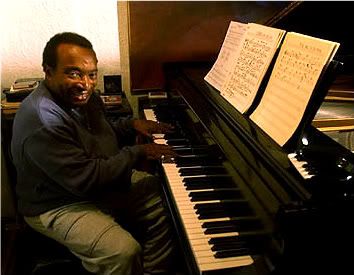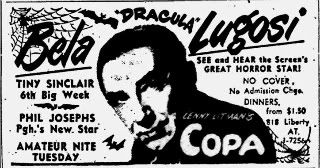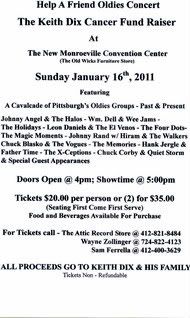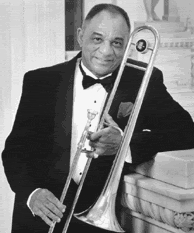
Pat DiCesare
Pat DiCesare was born in Trafford on April 12th, 1938, into a family of nine siblings. His father came from Italy and settled in Trafford to work as a shipper for Westinghouse Electric and raise his family.
After he graduated from Trafford High, DiCesare, like his dad, took a job with Westinghouse in nearby East Pittsburgh after a taste of college at Youngstown State.
He left WE just months later to work for Tim Tormey as a stock boy and later record distributor for Regal Records (Dicesare would also work in sales and promotion for Decca Records). Tormey was a local concert promoter and talent agent who DiCesare would eventually partner with in the biz that attracted him from the very start.
As a teenager, DiCesare was in a doo-wop band with a group of friends called The Penn Boys. He wrote, produced, and released his first single in 1957, “Gonna Have a Party,” done by The Penn Boys.
He was a singer for the band, but even then knew what career path was best suited for him. DiCesare stepped out of the spotlight and took on the role of manager, writer and producer.
The budding songwriter penned “I'm Spinning” and “You Say You Love Me,” released by Joe Averbach's Fee Bee Records in 1957. The tunes were recorded by the Kripp Johnson version of the Dell Vikings just after the originals had released “Come Go With Me” and “Whispering Bells” on Dot Records.
He started Bobby Records in the fifties, named after his first recording artist Bobby Vinton, who did "Halellujah I Love Her So" and "Twilight Time". Ray Charles and The Platters also released the songs, leaving Vinton and Bobby Records in the dust, though it did land the Polish Prince a contract with Epic Records. DiCesare later managed The Marcels.
On May 8th, 1962, the first concert that DiCesare promoted solo hit the stage. The show starred the Four Freshmen at Stambaugh Auditorium in Youngstown, Ohio, a venue that seated about 2,500. It was a modest start to a spectacular career.
DiCesare and Tormey were partners by now, and he worked with him on a “Shower of Stars” concert series that bundled several headline acts, usually in partnership with KQV radio. In the fifties, concerts were held at the 3,700 seat Syria Mosque in Oakland or the 2,000 seat Soldiers & Sailors Memorial Hall across the street.
Even with those small venues, the rule of thumb was that a single act couldn't sell out a house, which is why the old days were sprinkled with so many great shows featuring a half-dozen or more performers. And the rule of thumb was no matter how many acts you brought in, they could never sell out an arena show.
But Porky Chedwick of WAMO changed that thinking. He brought in the first rock 'n' roll show at the Arena in May of 1962, starring Jackie Wilson, The Drifters, The Coasters, The Castelles, Jerry Butler, The Flamingos, The Angels, The Blue Belles, and The Skyliners. It was a roaring hit, and gave DiCesare and Tormey a blueprint to work from for future shows.
Their first "Shower of Stars" hosted by the Civic Arena was held on June 14th, 1963. It starred Dion, The Chiffons, The Shirelles, and Freddy Cannon, and did pretty well at the gate.
It also spawned an innovation - National Record Mart became the first major off-site ticket broker. Sam, Howard and Jason Shapiro, who owned the NRM, distributed ticket vouchers to all their 34 Tri-State stores, adding a quarter to the cost of each ticket. The guys all knew and trusted one another; in fact, the sales were kept in a box kept under each store's cash register.
So hey, for better or worse, Ticketmaster is the oak that grew from the acorn planted by DiCesare, Tormey and the Shapiro brothers.
Though their show was a rollicking success, there wouldn't be another rock concert at the arena until September 14th, 1964. That's when Tormey and DiCesare brought in a mop-headed Brit band called the Beatles.
There are some wild stories about the travels of the $5,000 that DiCesare had to put down as advance money, but this much is gospel: his dad borrowed the money from the Westinghouse Electric Credit Union and put up his house as collateral. No pressure, hey?
And to add to it, DiCesare was in the Army and stationed at Fort Sill while the whole thing was going down. He even missed the show.
It was a show of firsts. It was the first time an arena show would sell on the merits of just one performer instead of a posse of bands. (For the record, there were opening acts: Clarence “Frogman” Henry, Jackie DeShannon, The Exciters, and the Bill Black Combo. But they were there at Beatle manager's Brian Epstein's bequest. He feared that the Fab Four would lose their voices during the tour if they were the only band playing.)
It was also the first time an act demanded and received a percentage of the gate against a guarantee. Tormey whittled the guarantee down to $25K from the asked-for $35K; in exchange, the Beatles got a percentage of the gate if it was worth more (It was; they got $37,000.)
The show sold out in 36 hours, all 12,600 tickets going at $5.90 per pop. The Beatles made out as did Tormey and DiCesare, taking in $8,800. DiCesare's dad got to keep his house. In fact, Pat would end up eventually paying his pop double the amount out of gratitude for launching him into the big time.
And hey, another first: the tickets were all mail order, and Tormey had the sales handled by a convent. "Get thee to a nunnery" took on a whole new meaning for Beatlemania.
DiCesare used to emcee the concerts, but his gig with Uncle Sam in Oklahoma precluded introducing the Fab Four. The honor went to KQV's Fun Loving Five of Hal Murray, Steve Rizen, Dave Scott, Dex Allen and Chuck Brinkman.
The Beatles' first US Tour became the genesis for arena-rock, not just in Pittsburgh but around the country. They were the first act that could sell out an arena on their own; many others were to follow. Remember, in 1964 the Rolling Stones played West View Danceland just two weeks before The Beatles show at the Igloo. Geez, would that change by the end of the sixties!
And a new breed of promoters was emerging, too. DiCesare-Tormey, Bill Graham Productions in San Francisco, Electric Factory Concerts in Philadelphia, Belkin Productions in Cleveland and Sid Bernstein in New York were now "rock concert promoters," the new industry Goliaths.
They did several Arena shows a year, bringing in the Beach Boys, the Rolling Stones, and other rock giants along with the occasional "Shower of Stars" olio.
DiCesare expanded his reach. In 1965, he co-founded the Dapper Dan Roundball Classic with his Trafford and Youngstown State bud Sonny Vaccaro and the help of Post-Gazette sports writer Al Abrams.
It was the first national high school All-Star game and spawned a zillion imitators. The first game of its 43 year national run was played in 1965 at the Civic Arena, its home until 1993.
Tormey left Pittsburgh in 1967 for Hollywood to work with Dick Clark Productions (he passed away in 2009), so DiCesare continued to promote concerts on his own. His first company was called “University Attractions,” later becoming “Pat DiCesare Productions.”
At the same time, DiCesare was booking and managing between 50 to 100 local bands. He was one busy dude - and one you had to know. If you wanted to stage a rock show in Pittsburgh, the odds were that you had to knock on DiCesare's door to get in. And play nice, too - DiCesare was storied to be near blows once or twice with temperamental artists. Hey, it is Pittsburgh, after all, and lawyers aren't the only option to enforce a contract.
DiCesare had exclusive leases with the Civic Arena, Syria Mosque, and eventually Three Rivers Stadium, promoting almost all of the large rock concerts that played Pittsburgh plus booking shows in regional secondary markets like Erie and Johnstown.
The way it worked was that the band's promoter had to cut DiCesare in on the show, and then he would prime the pump in the city, setting up the show and doing the PR.
Still, sometimes a guy needs a hand. In late 1973, DiCesare joined with Rich Engler, who ran an entertainment agency called Go Attractions that booked edgy acts like Lou Reed and David Bowie.
They called the new company DiCesare-Engler Productions, and it became one of the top grossing, powerhouse agencies in the nation. Engler focused on booking the acts while DiCesare focused on one-off opportunities, especially eying real estate. Later, they would add another partner, Ed Traversari, who handled mid-size venues.
Over the years, DiCesare and company brought Chicago, Grand Funk Railroad, The Who, Black Sabbath, Led Zeppelin, Janis Joplin, Pink Floyd, Eric Clapton, Aerosmith, the Grateful Dead, Crosby, Stills & Nash, Bruce Springsteen, ZZ Top, Paul McCartney, and Jesus Christ Superstar to the arena.
He also did many of the first shows at Three Rivers Stadium, including Led Zeppelin, Three Dog Night, and Alice Cooper. TRS also hosted his single biggest money loser, the "Monsters of Rock" concert in 1988, featuring Van Halen, the Scorpions, Metallica and many empty seats masquerading as fans.
You may have a memory long enough to remember some of the stories of those shows back in the spoiled-brat days of rock...well, OK, maybe they still are, but not quite like this:
The Led Zep manager smashed $2,500 worth of champagne because he didn't like the brand; Janis Joplin pranced on stage in a see-through mesh skirt sans panties after a backstage tryst; the Rolling Stones refused to let the KQV jocks introduce them, the hubbub that surrounded the Doors after Jim Morrison's Miami flashing, Motley Crue with their X-rated background film and the many groups that needed sweet-talking after refusing to play a sold-out show over one presumed slight or another. But hey, it's only rock 'n' roll, right?
DiCesare-Engler took over operations of the Downtown Stanley Theatre in 1977, buying the old movie palace and turning it into a rock hall. The venue became the number one grossing auditorium in the country.
They sold the Stanley to the Cultural Trust for $12M in 1983. The Trust converted it into the Benedum Center, and it still fills with music on occasion, like during the PBS doo-wop specials.
In 1980 DiCesare-Engler expanded operations to Las Vegas for a brief period. DiCesare moved there, promoting shows and operating the 7000 seat Aladdin Theatre for the Performing Arts.
He returned to Pittsburgh in 1981 and along with Nick Censi and Rich Engler formed DECCO Records. They had signed a few local acts, notably Joe Grushecky. It was one of their few misses.
That same year, DiCesare-Engler was honored with a Variety Club award and were recognized for “Bringing Broadway Back to Pittsburgh” by Mayor Richard Caliguiri.
DiCesare-Engler signed an agreement with the Syria Mosque in Oakland in 1984, where they assumed management and continued promoting rock and Broadway shows ala the Stanley Theatre. That didn't work out quite as well; the Mosque became a parking lot in 1991.
DiCesare began looking for a summer venue at that time. The Mosque didn't have AC and they had sold the Stanley, so they needed a fan-friendly stage to take full advantage of the busy summertime touring season.
In 1986, DiCesare purchased 500 acres of land near Cranberry in Adams Township with plans to build a romper room that would include an indoor mall, waterpark, children's theme park, and a $10 million outdoor amphitheatre with 7,500 covered seats and room for 12,500 lawn spectators.
The Adams Township zoning commission didn't share his dream, and so that plan went down the drain after the lawyers and judges finished doing their sometimes baffling and always expensive thing. DiCesare eventually sold the parcel after starting a 2,100 lot housing project (the media called it "DiCesare City") that's now the Adams Ridge development.
DiCesare-Engler began booking the AJ Palumbo Center when it opened in 1988, and had built the Melody Amphitheatre (aka IC Light Amphitheatre, Chevrolet Amphitheatre, and now the Amphitheatre at Station Square) in 1989.
He purchased 250 acres in Jackson Township after the Adams turn-down as an amphitheatre site, but while in the process of rezoning the property, Pace Concerts of Houston broke ground in Burgettstown for Star Lake.
In March 1990, DiCesare-Engler joined with the PACE Entertainment Group to co-promote the Star Lake Amphitheater (now the Post Gazette Pavilion at Star Lake) which later opened in June of 1990. If ya can't beat 'em, join 'em.
DiCesare-Engler was a big thing in the concert industry. They were in the top 20 in gross sales amongst US concert promoters thanks to the success of their smaller venues such as the AJ Palumbo Center, Syria Mosque, IC Light Amphitheatre, and their 1992 venture with Factory Concerts to build the 4000 seat Bud Light Amphitheatre at Harvey's Lake, 5 miles outside of Wilkes-Barre.
The dynamic duo also continued to fill the Civic Arena and Three Rivers Stadium with warm fannies, along with packing the Star Lake Amphitheatre. In 1997, when the Post Gazette first released their list of the "Top 50 Culture Brokers," Pat DiCesare and Rich Engler ranked third. Hey, who even knew rock was culture?
DiCesare began to branch out, creating and booking festivals and entertainment happenings while Engler continued booking their bread-and-butter concerts.
He created the "Fright Fest," held at the Ampitheatre at Station Square every Halloween season, the "Celebration of Lights," a charity event celebrated at Hartwood Acres every Yuletide, and various ethnic festivals in Pittsburgh, Philadelphia, Baltimore, and even Irvine, California.
DiCesare even took on the Pittsburgh Three Rivers Regatta in 1998. It was $750,000 in debt and floundering at the time. He added sponsors and cut the event from six days to four, while DiCesare-Engler was able to book performers at better prices. The Regatta got back on its feet in a hurry. It took DiCesare just two years to right the ship once again.
That year would be the last hurrah for DiCesare-Engler Productions. It was sold to SFX Entertainment as local promoters found it harder and harder to compete against the national big boys. The music industry was losing its local roots to industry-wide consolidation; as we can see today, there are no small ponds left.
Engler stayed aboard with the new company and became the CEO of DiCesare-Engler/SFX. DiCesare, 60 years old, opted out, ending a nearly 25 year partnership between he and Engler. SFX would later be sold to Clear Channel, and then fall into the clutches of Live Nation; Rich Engler got off the merry-go-round in 2004 and Traversari in 2007.
DiCesare has been out of the entertainment business since the SFX sale, and now invests in and manages real estate, operating the highly successful DiCesare Investment Group Inc. It gave him a chance to catch his breath and reflect, and in 2014, he released his insiders' memoir, “Hard Days, Hard Nights …,” chock full of yarns and tales of indulgence from the rock era.
He lives in Greensburg with Kathy, his bride of over four decades, and has three children and two grandchildren. Pat DiCesare is enjoying his golden years, serving as a professor emeritus of local rock history.
And hey...for Old Mon's money, you can keep the new music industry. This City made the rock 'n' roll map in 1964, when Pat DiCesare's dad literally bet the house on his kid and a bunch of nuns who stacked dollar bills and stuffed envelopes with Beatle tickets. Let Live Nation and Lady Gaga top that.



